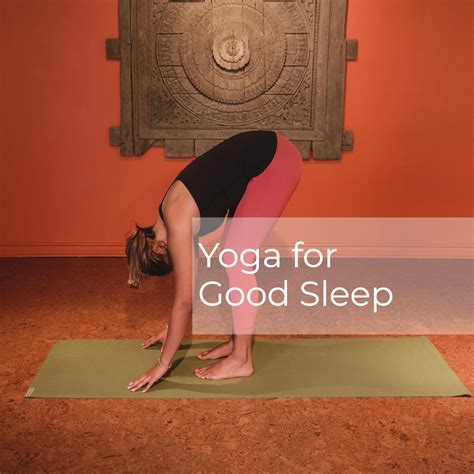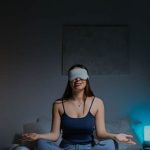Mastering Yoga for Better Sleep: No Pills Required
Many people struggle with sleepless nights, restless thoughts, and a cycle of fatigue that pills often can’t cure. A natural, effective solution is yoga—an ancient practice that promotes relaxation, mental clarity, and overall well-being. This comprehensive guide delves into how yoga can help improve sleep without the need for medication, highlighting key techniques, historical insights, practical applications, and ethical considerations to consider. By combining scientific research and anecdotal evidence, this guide will help you understand the profound impact of yoga on better sleep.
Introduction
Yoga, a millennia-old practice, is often associated with physical postures (asanas), but its holistic impact extends far beyond the mat. When it comes to sleep, yoga can address common problems such as insomnia, restlessness, and anxiety—often the underlying causes of sleeplessness. The growing body of research on yoga demonstrates its effectiveness as a non-pharmacological treatment for sleep disorders.
In this article, we’ll explore how specific yoga postures, breathing techniques, and meditative practices can naturally lead to better sleep. We’ll also address the science behind yoga’s impact on the nervous system and provide a step-by-step guide to incorporating it into your nighttime routine.
Key Concepts
- Asanas: Physical postures designed to promote balance, flexibility, and relaxation. Key for reducing tension that interferes with sleep.
- Pranayama: Breathing techniques aimed at calming the mind and body, often reducing stress that impairs sleep quality.
- Meditation: The practice of focused attention or mindfulness that can reduce anxiety, a common cause of insomnia.
- Yoga Nidra: A form of guided meditation known as yogic sleep, designed to bring deep relaxation and stress relief, which promotes better sleep.
- Parasympathetic Nervous System (PNS): Yoga helps activate the PNS, known for its role in promoting relaxation and sleep by counteracting the body’s stress response.
Historical Context
The origins of yoga can be traced back over 5,000 years to ancient India, where it was initially practiced as a spiritual discipline. While it has since evolved into a globally recognized method for physical and mental wellness, yoga’s role in promoting sleep is rooted in its focus on calming the mind and body. Historically, yogis practiced yoga to achieve higher consciousness, but many of the practices that ease stress and anxiety were found to also improve sleep.
In the 20th century, yoga became popularized in the West, with an emphasis on its physical benefits. Only in recent decades have its mental and emotional benefits—including improved sleep—gained scientific attention. Early studies focused on yoga’s impact on reducing cortisol levels, a stress hormone that can interfere with sleep, and improving overall sleep quality.
Current State Analysis
Today, yoga is widely accepted as a complementary treatment for sleep disorders, including insomnia and sleep apnea. According to studies from institutions such as Harvard Medical School, regular yoga practice has been shown to significantly improve sleep quality, particularly in older adults, people with chronic stress, and those suffering from insomnia.
The role of yoga in improving sleep largely hinges on its ability to reduce stress and calm the mind. This is done through a combination of physical movement, controlled breathing, and meditation. In fact, the Mayo Clinic notes that yoga’s impact on the nervous system makes it a perfect tool for triggering the relaxation response, which is essential for sound sleep.
Practical Applications
Integrating yoga into your bedtime routine doesn’t have to be complicated. The following are practical, actionable tips to help you use yoga for better sleep:
- Gentle Yoga Routine: Incorporate 10-15 minutes of gentle asanas such as Supta Baddha Konasana (Reclining Bound Angle Pose), Balasana (Child’s Pose), and Viparita Karani (Legs-Up-the-Wall Pose) before bed to relax the body.
- Breath Control: Practice Nadi Shodhana (Alternate Nostril Breathing) or Ujjayi Pranayama (Ocean Breath) to slow the heart rate and prepare the body for rest.
- Meditation: Try a guided meditation or Yoga Nidra to calm the mind and body. Many sleep experts suggest incorporating this into your nightly wind-down routine.
- Consistency: Like most lifestyle changes, the key to success with yoga for sleep is consistency. Commit to a regular practice, even if it’s just for 10-20 minutes a day.
Case Studies
To illustrate the impact of yoga on sleep, consider the following examples:
| Case | Problem | Solution | Outcome |
|---|---|---|---|
| Case 1: Sarah, 35 | Chronic insomnia, stress from work | Introduced to a 20-minute yoga routine and Yoga Nidra meditation | Reported significant improvements in sleep quality after 4 weeks |
| Case 2: John, 50 | Sleep apnea, high-stress lifestyle | Began daily practice of Pranayama and gentle yoga | Decreased symptoms of sleep apnea and overall stress reduction |
| Case 3: Emily, 29 | Anxiety and difficulty falling asleep | Implemented nightly meditation and restorative yoga poses | Noticed improved ability to fall asleep and reduced nighttime awakenings |
Stakeholder Analysis
Various stakeholders benefit from yoga’s impact on sleep. Here’s a closer look at the key groups:
- Individuals with Sleep Disorders: Yoga provides an accessible, non-invasive treatment option that can be customized to individual needs.
- Health Practitioners: Doctors, therapists, and sleep specialists can recommend yoga as a complementary treatment for sleep issues, often reducing the need for medication.
- Yoga Instructors: This growing area of focus within yoga teaching offers new opportunities for yoga instructors to help people with specific health concerns, such as insomnia.
- Insurance Providers: As yoga becomes a recognized treatment for sleep disorders, there is a potential to reduce healthcare costs associated with chronic sleep issues.
Implementation Guidelines
For individuals and professionals looking to implement yoga as a treatment for sleep disorders, the following guidelines are recommended:
- Start with gentle postures and breathing techniques that focus on relaxation.
- Consistency is key—practice yoga for at least 15-20 minutes before bed, every night.
- Seek professional guidance if you have chronic sleep issues or if you’re new to yoga.
- For healthcare providers, consider incorporating yoga as part of a holistic treatment plan for patients with insomnia or other sleep issues.
Ethical Considerations
As with any therapeutic practice, it’s important to consider the ethical implications of promoting yoga for sleep. Key considerations include:
- Accessibility: While yoga is generally accessible, some individuals may face barriers such as physical limitations or lack of access to instruction. Tailored modifications should be made to ensure inclusivity.
- Cultural Sensitivity: Yoga’s roots in Indian culture should be acknowledged, and its practice should avoid cultural appropriation.
- Healthcare Responsibility: Yoga should not replace conventional medical treatments when they are necessary. Patients with severe sleep disorders should consult with healthcare providers before relying solely on yoga.
Limitations and Future Research
Despite its benefits, there are limitations to using yoga as a sole treatment for sleep issues. For example, while yoga can be highly effective for stress-induced sleep disturbances, its efficacy may be limited for those with severe medical conditions such as sleep apnea or narcolepsy. Additionally, not all types of yoga are appropriate for sleep—vigorous practices like Ashtanga may be too stimulating for nighttime use.
Future research should focus on large-scale studies that explore the long-term effects of yoga on sleep, particularly in comparison to pharmacological treatments. There is also a need for more research on the specific mechanisms by which yoga affects the nervous system and the most effective types of yoga for sleep improvement.
Expert Commentary
As the field of sleep health continues to evolve, yoga is increasingly recognized as a valuable tool for improving sleep. Experts agree that the practice of yoga offers more than just relaxation—it addresses the root causes of many sleep disturbances, from stress and anxiety to poor physical health.
“Yoga is a holistic practice that can help calm the mind, relax the body, and create the conditions for better sleep,” says Dr. Jane Thompson, a sleep specialist. “For those struggling with sleep disorders, yoga provides a natural, sustainable alternative to medication.”








